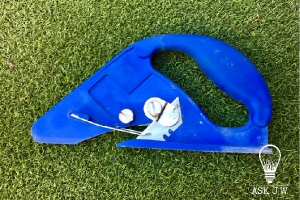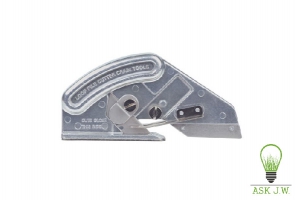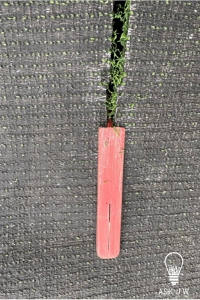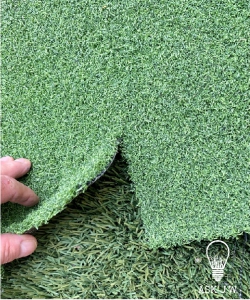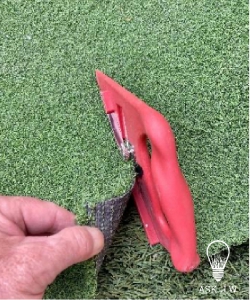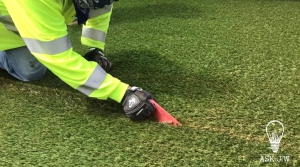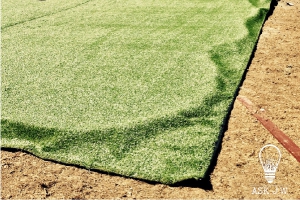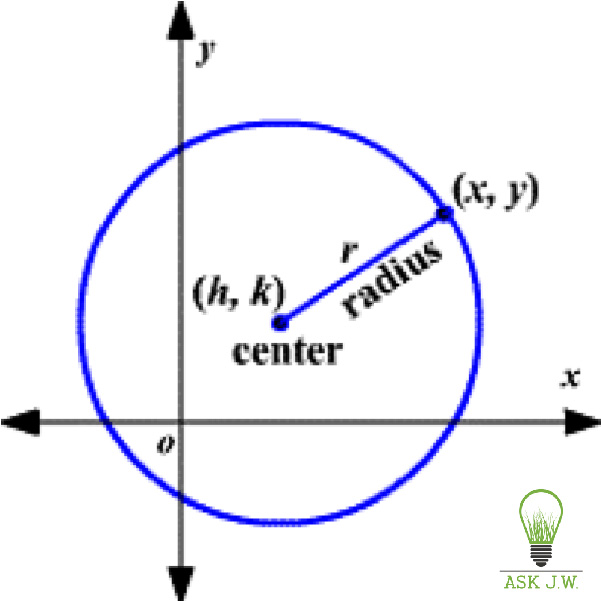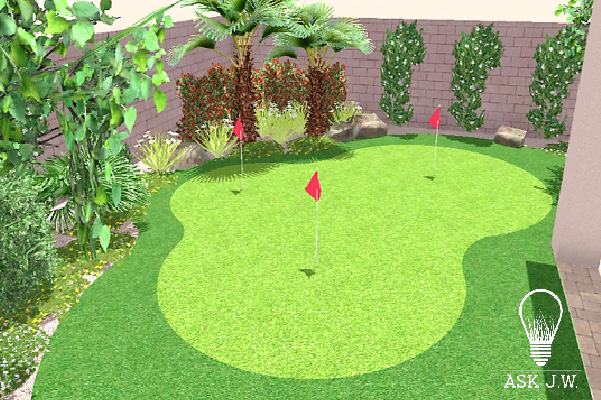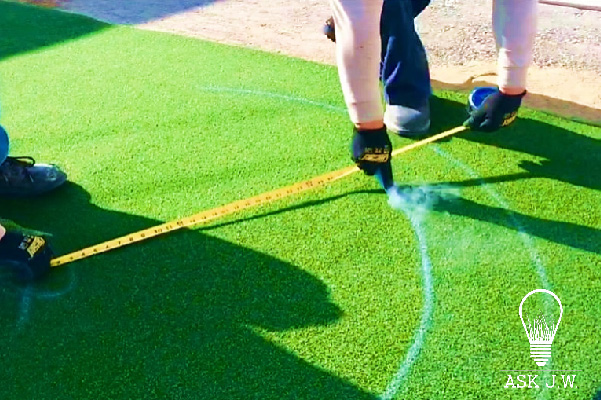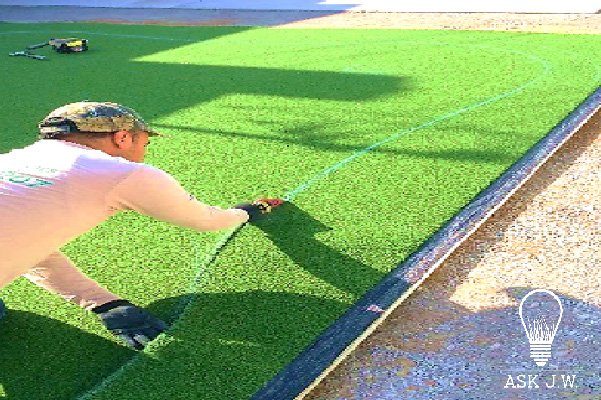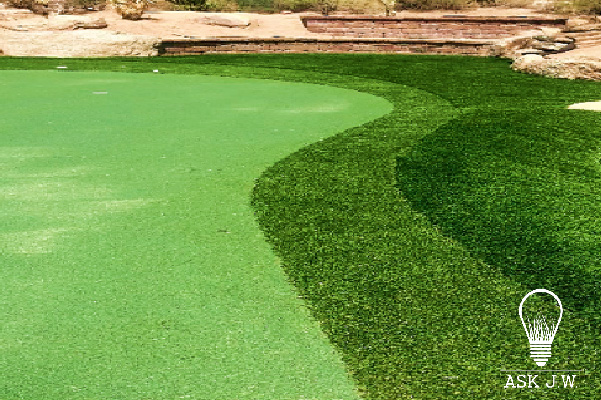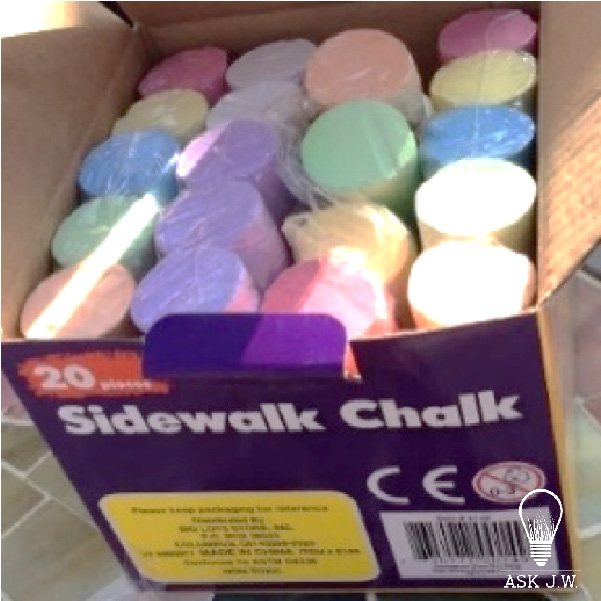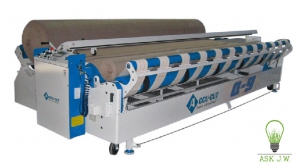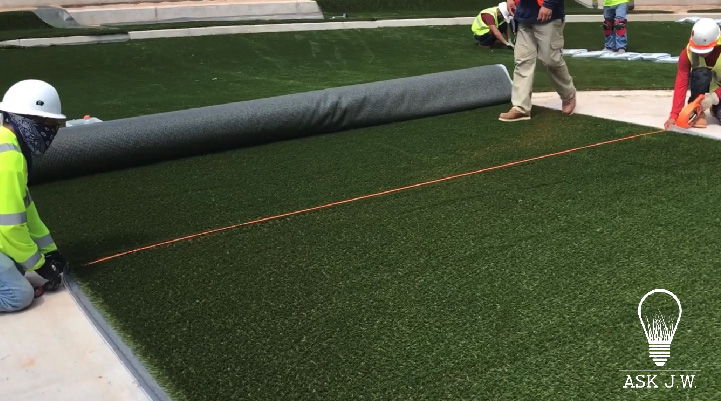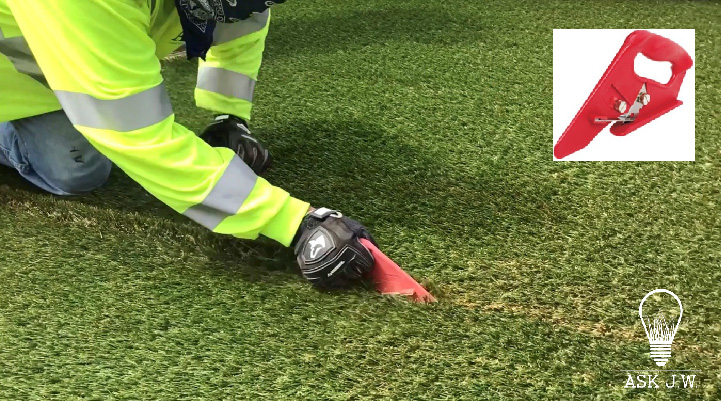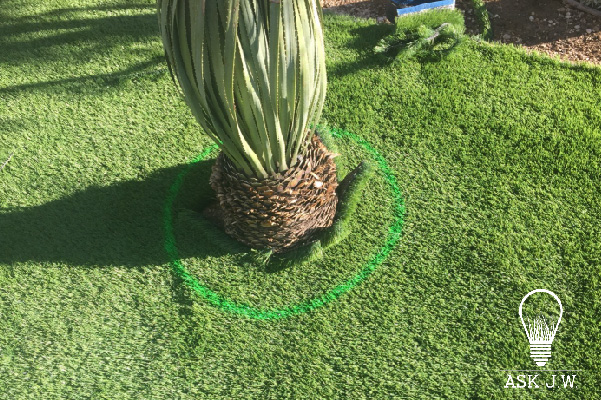The push cutter is one of the most important tools that you will need in your tool bag. The push cutter also known as a loop and pile cutter has been used for decades in the carpet industry. This month ASK JW will teach you why this tool can save time, money, and allow you to be an artist with your radius cuts.
The Push Cutter & Synthetic Turf
The push cutter may have been created to cut carpet and similar textiles, but this inexpensive, easy-to-use tool does more than just cut carpet. This tool cuts through up to 110 ounces of synthetic turf like cutting butter.
Three Easy Steps

1 . Take a sharp utility knife and cut a slit where you want to start the alignment of the desired line or shape. This will make for an easier start versus trying to force the blade to cut while holding onto the edge of the roll.
This will also allow the turf/backing to slide into the “mouth” of the push cutter.
2 . Take the push cutter and slide itinto the opening of the slit/cut approximately 6 inches while simultaneously grabbing the turf.
3 . Grip the push cutter and the turf firmly while forcing/pushing the push cutter down the marked line, radius, or curve that you have created. It’s that easy!
Waste
The push cutter is a great tool to remove overlapping turf that runs into the landscape. This tool allows you to cut excess waste off the perimeter with speed and accuracy.
**Make sure you change out the blade every 30 feet for fast and smooth cutting
Radius, Circumference, and Diameter
Radius, circumference, and diameter are important words to know and understand when installing a putting green. When these terms are used, your projects will always look beautiful. Putting greens rarely have sharp, square, or pointed designs. Most radius lines are designed around the placement of putting green cups. To achieve a smooth radius in all synthetic turf installations, you must be able to conquer the push cutter. The push cutter’s cutting capability is smooth and fast. It assists the installer in creating a smooth radius in all types of turf, especially putting greens. A smooth undulated putting surface goes hand in hand with its exterior outline, “roundness without sharpness.” The Push Cutter does all that and more.
**Make sure you change out the blade every 30 feet for fast smooth cutting
Pushing Cutting Putting Greens
The Push Cutter is JW’s favorite tool for creating smooth curves, radius, and circles.
I recommend using sidewalk chalk when marking the radius of putting greens. After you mark the putting green, take the push cutter and cut on the center of the chalk line. It will rub off easily after installation.
When the entire radius and perimeter are marked, cut along the chalked line with the push cutter tool.
**Make sure you change out the blade every 30 feet for fast smooth cutting
Using The Push Cutter As a Q9
(Mechanical carpet/turf cutting machine)
When installing large projects, the push cutter can be used like a Q9 Mechanical carpet/turf cutting machine, but with a little labor. Having a push cutter allows the team to cut sections quickly for production.
When cutting turf sections to be used for your project, first create a chalk line, then use the push cutter along the line created as outlined in the steps above. This will also eliminate the common mistake of cutting too much turf off the roll.
Push Cutting Around Vegetation
The push cutter is great for cutting waste and circles around vegetation. Works great for tree wells.
Below is a video that will show you how easy Push Cutting can be.

For more information regarding cutting around playground poles or would like to schedule a training or webinar, please contact J.W.: askjw@sgwcorp.com or call 888.846.3598
Suggestions for the use of ASK JW installation techniques are solely at the end users’ discretion; however, the user should determine suitability for the intended use by his/her own evaluation. Because the use of the materials is beyond our control, neither ASK JW nor SGW shall be liable for the outcome of any use of said materials, including any injury, loss, or damage, direct or consequential, arising out of the use or inability to use these techniques and products.
